Hiking Safety: Before, During, & After the Trail
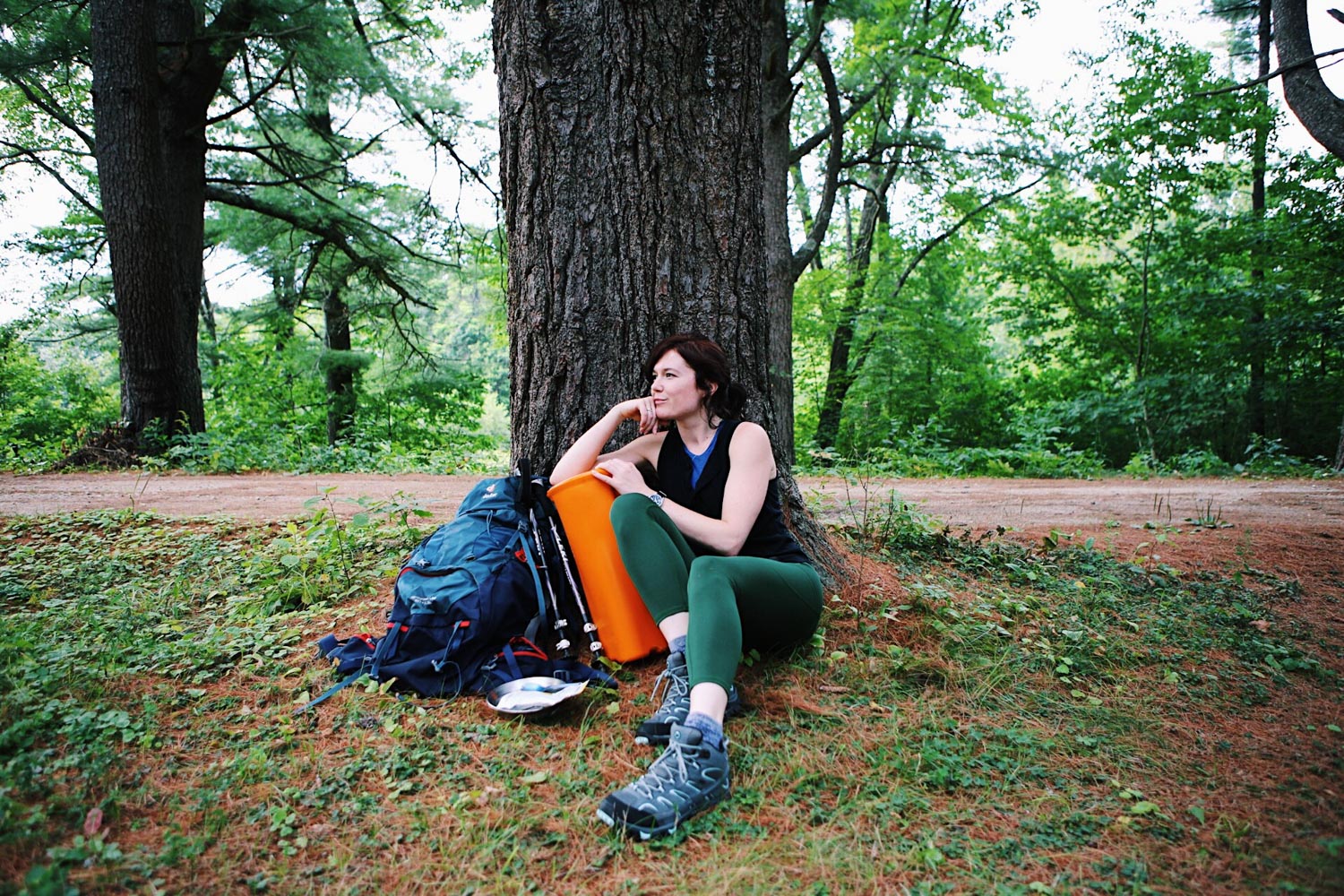
Hiking Safety
Before, During, and After the Trail
In partnership with Sabre
When we set off on a hike, whether we’re with a group or on our own, we always feel better knowing that we’re fully prepared with the right gear and know-how to keep ourselves safe.
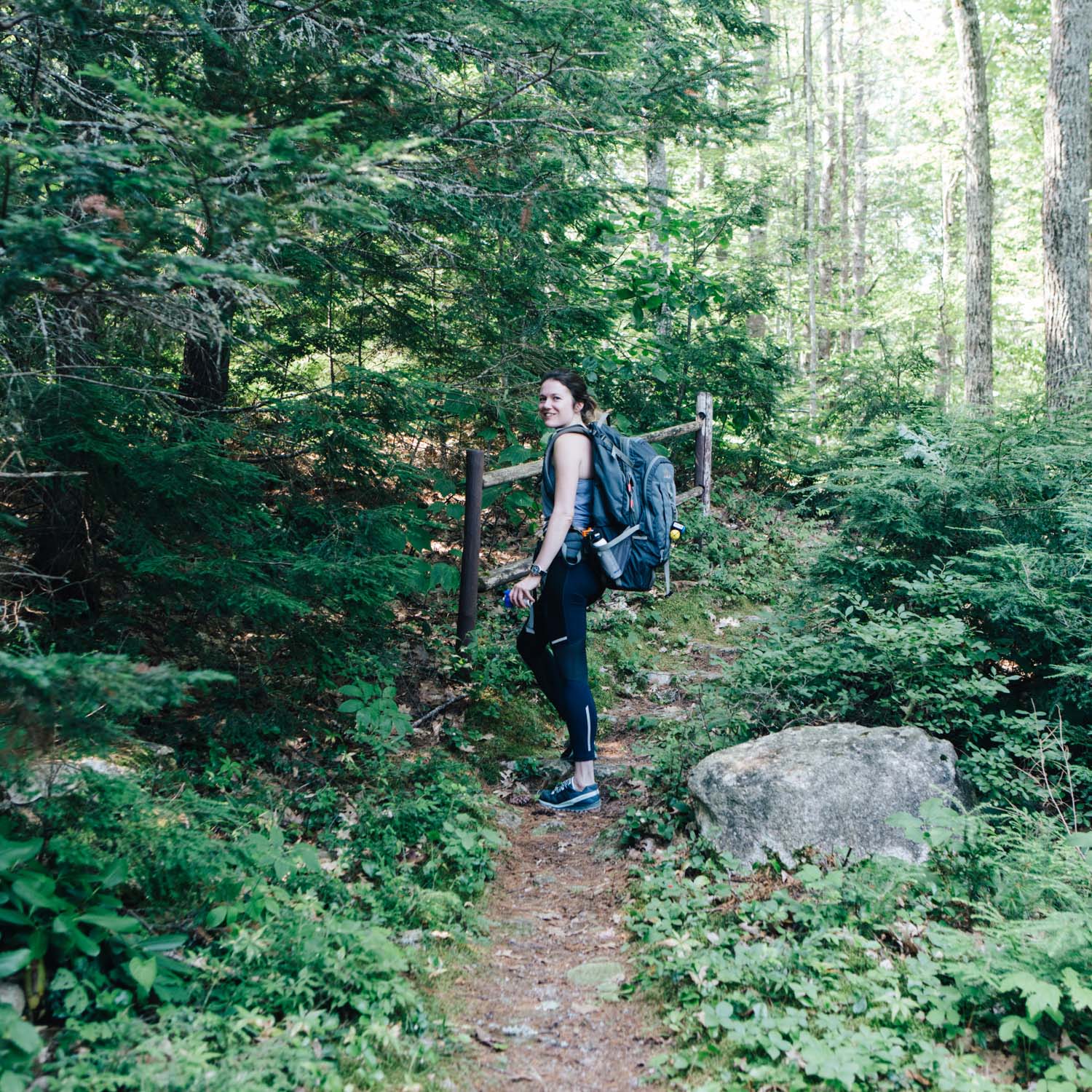 Thinking about safety doesn’t mean leading with fear, which can be hard to do when the media sensationalizes missing hikers and random crime. It can be even harder when people (often those we’re closest to!) tell us what women can and can’t do in the outdoors.
Thinking about safety doesn’t mean leading with fear, which can be hard to do when the media sensationalizes missing hikers and random crime. It can be even harder when people (often those we’re closest to!) tell us what women can and can’t do in the outdoors.
On the contrary, we believe that hikers of any gender can (and should!) go solo if they wish. And we know if we’re well equipped, informed, prepared, physically capable, and situationally aware—we’ll be better off dealing with any risks, no matter where we are: on the trail, navigating a city, or traveling somewhere new.
Keep in mind as you’re reading, safety is personal. What makes one person feel safe and secure may not be what makes you feel safe and secure. So make sure to read this guide and consider your needs and experience levels. And when you are out hiking, above all else, listen to your instincts. They’re what got you to the trail in the first place.
Getting out there with confidence is always a good thing. So, we’ve done our research to compile a guide of safety tips to help you plan ahead and enjoy your hike, before, during, and after the trail.
While all the points that follow could be a blog post on their own, they’re a place to start. We’ve also included links to further resources if you want to learn more.
Before
Plan your route
Know where you’re going, and tell someone what your route is and when you expect to return back to your car/in cell phone range. Simple, right? That person could be a friend, a partner, or even a ranger if you don’t have someone reliable to report to.
For route planning, we like looking at maps and guide books, but apps (like AllTrails) and websites can be helpful, too.
Read: Planning Your Hike (American Hiking Society)
Know your physical capabilities and limitations
Having a good understanding of your own level of fitness, experience, and confidence makes hikes more enjoyable and safe. You’ll know what kind of trail distance, elevation gain, and intensity level to choose when planning your route. In addition, you can better plan for what trail conditions to avoid, and know in advance when it might be a good idea to turn back.
How Fit are You? Test your fitness level (Mayo Clinic)
Want to get in better hiking condition? How to Train for Hiking (REI Co-op Journal)
Pack the essentials
- Pack your day pack with the ten essentials, no matter how long or short your planned hike may be.
- Wilderness First Aid Kit should be packed well if you recently used it so you’re set to deal with scrapes, blisters, etc.
- Safety-specific items can give you another leg up on hiking safety, and can be tailored to your needs.
- Hiking in bear country? Bear spray can give you peace of mind.
- Going solo? A personal alarm adds an extra level of defense should you feel threatened.
- A shade hat and personal alarm.
- Day pack and hiking boots ready for the trail.
Take a course
Want to know more about navigation? Wildlife first aid? Emergency response? Taking a single or multi-day course can help ensure you’re equipped to respond to backcountry emergency situations.
Check out these courses:
Dress appropriately
Along with packing, choosing the right clothing can make a world of difference in your comfort, and yes, safety, while hiking. This is particularly true if the weather changes unexpectedly, or if you do get injured or lost. Light layers you can shed or add as needed are key.
Read: What to Wear Hiking (REI)
Trailhead safety
Take note of where you parked, number of other cars to gauge how busy the trail may be, and be aware of the general happenings here. Register in the trailhead log (if there is one) and make sure your keys are zipped in a secure pocket. Also check you have easy access to any safety supplies, and your map and water so you’re not digging deep in your pack for these items.
The trailhead is also where you’re most likely to see other people. And since it’s accessible by car, not just by foot – those other people might not necessarily be hikers. Take note of any unusual behavior. A red flag might be someone paying extra attention to you and your movements or someone who is obviously not intending to hike. Listen to your gut.
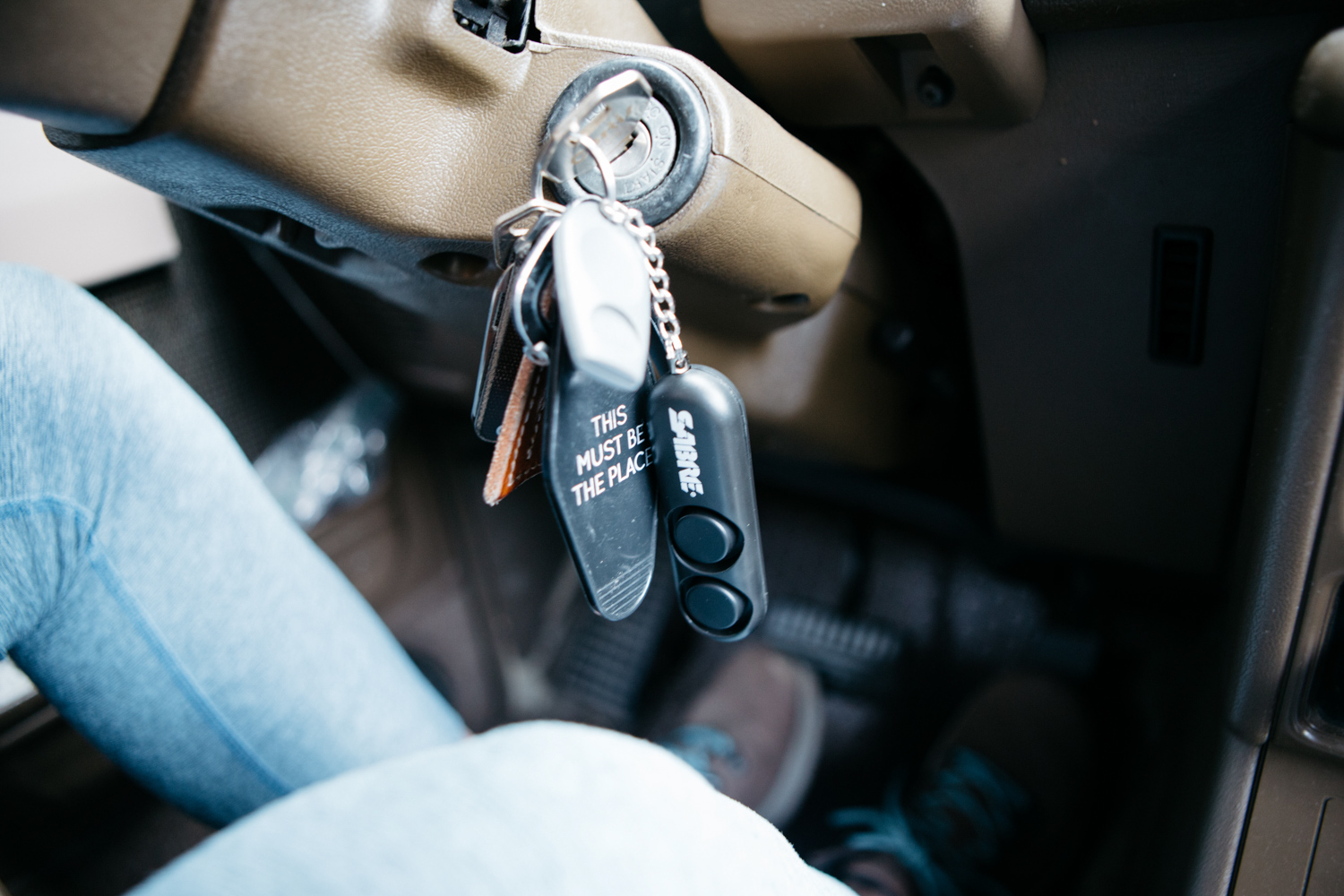
Keychain featuring a Sabre personal alarm. The 120 dB siren alarm (audible up to 600 feet away) can help call for assistance or deter an attacker.
During
Stay on trail
This seems obvious, but the best way to respect nature and also not get lost on a hike, is to stay on the trail. In addition to not leaving your trail, continually make sure you’re on the right trail by checking in with your map or GPS. If you’re hiking with friends at different paces, wait for the other at trail intersections to make sure you’re all heading in the right direction.
Read: Navigate like a pro (Backpacker)
What if you do get lost? Try not to panic. As soon as you realize you’re lost: stop, think, observe, and plan. “Do not move at all until you have a specific reason to take a step.”
Wildlife safety
You’re more likely to see squirrels and birds than any large wildlife while hiking, but knowing what types of animals you could encounter and how to react if you do can benefit both you and the local wildlife.
- 9 Bear Safety Tips from a Biologist
- Safety in Cougar Country
- Wolf Safety
- Snake Safety
- Preventing Tick Bites
If you’re bringing safety products with you, make sure you know how to use them. Taking bear spray? You can even practice with water beforehand with Sabre’s inert training spray.
- Bear safety items: Bear safe, training spray, bells, and a horn.
- Frontiersman Bear Horn up close.

Properly storing your food in a bear canister is a must—it’s even required in many national parks and forest areas. The Frontiersman INSIDER Bear Safe is water-tight and scent-proof, easy for you to open, but certified and tested to withstand bears.
Stay aware of your surroundings & location
It’s easy to get consumed by the rhythm of your breath and the crunch of a trail beneath your feet, but zoning out isn’t the best idea for a few reasons:
- Wildlife. Because the most dangerous encounters is one that starts by surprise.
- Navigation. If you’re not hiking alone, it’s easy to let someone else do the navigating, but what if they assume they’re following you? For the safety of everyone, don’t leave the onus on your hiking partner(s) to keep you on route.
- Other hikers. This isn’t to say that other hikers are an inherent threat, but having an awareness of body language and staying alert when dealing with other people is a strength on trail and otherwise.
Keep hydrated
Dehydration can cause minor problems like mental fog to fatigue, to more serious illness if it gets severe. Because of this, staying hydrated while hiking is hugely important to safety.
Read: Hydration Basics (REI)
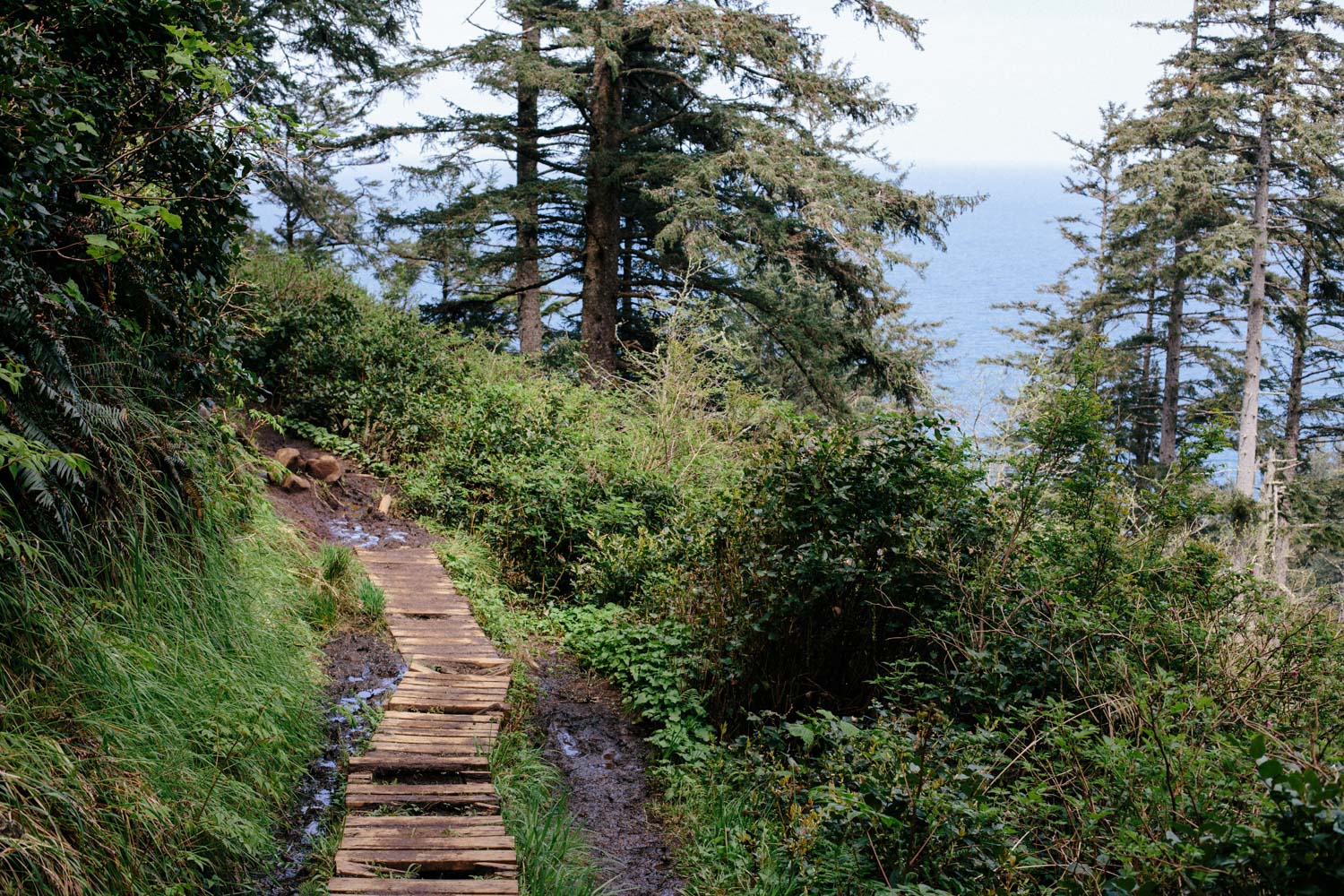
After
Trailhead safety
Follow the same steps as your pre-hike protocol to bookend your trip.
Tell people you’re back
Get in touch with whoever was keeping tabs on your departure and return time. You’ll both feel better knowing your trip went as planned, and won’t have any false alarms raised regarding your whereabouts.
Reflect on your trip & share helpful info
Now that your hike is over, take some time to reflect on what went well and what you might do differently next time.
This is also the time to share information about your hike with others via hiking groups, forums, or at a ranger station or visitor center so your experience can help inform others’ plans. Helpful details might include:
- Animal sightings
- Weather conditions
- Water levels at river or creek crossings
Store your gear properly
It’s easy to leave your pack stashed in your car, but bear spray specifically should be stored indoors where it won’t get too hot. Clean out your water bottles or hydration bladders, empty snack containers, etc. It’s also a good idea to restock first aid kit so it’s ready for your next outing.
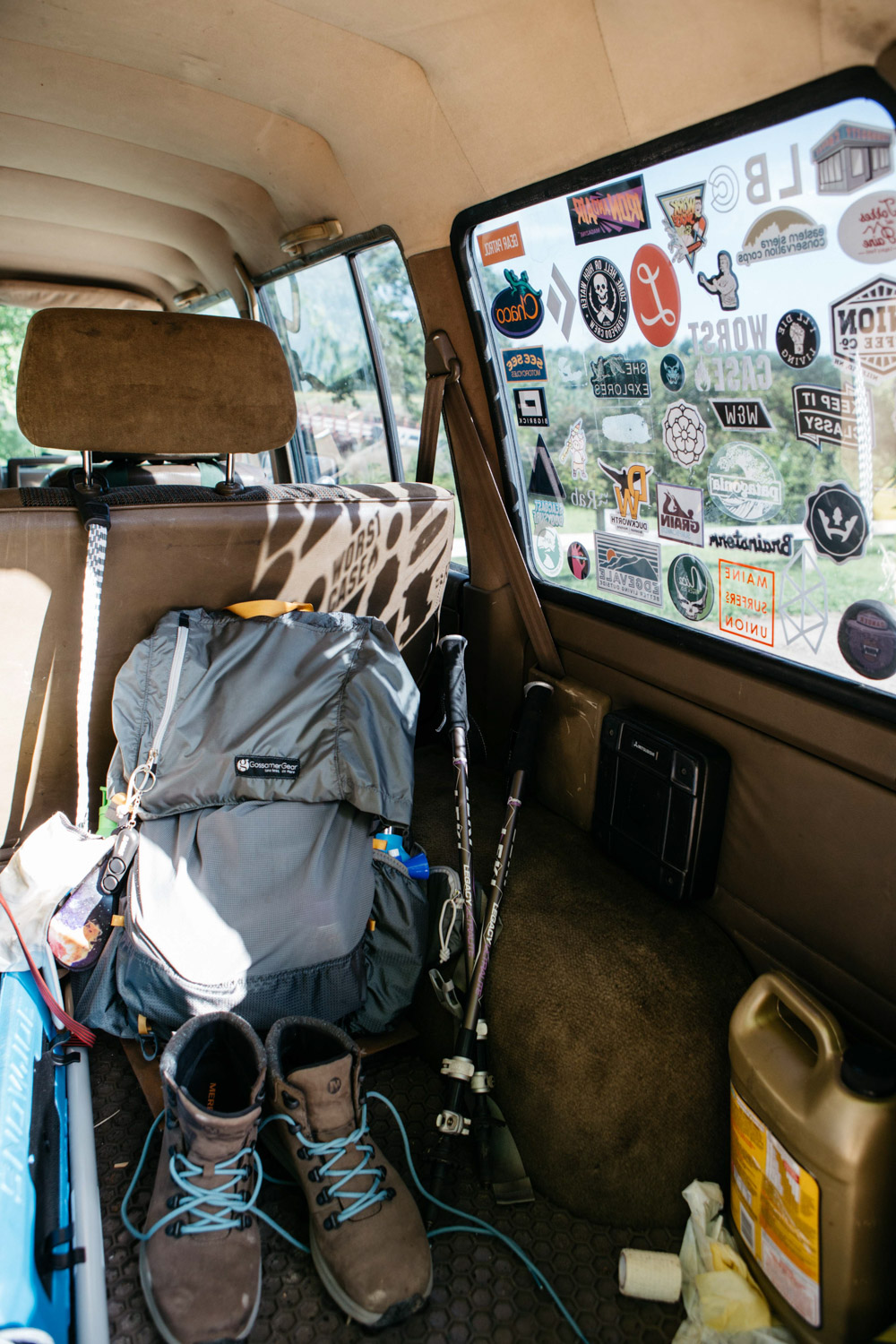
Photos by Gale Straub
This article was produced with support from our brand partner Sabre, who make personal safety products to keep you prepared for whatever lies ahead.




[…] prefer to go without a travelling companion. If that’s the case for you, then you should have emergency measures in place. Inform your friends and family where you intend to go and how much time you think it will take so […]
Bring a portable phone charger.
What should I do if my hike has been spostpone
Because of land slide, weather and other causes by nature.
Hi there! Not knowing particulars, it is difficult to provide advice here but would say it’s always best to follow local safety guidelines when it comes to weather and other natural disasters.
I agree. Hiking in extreme conditions is risky. It’s better to be safe than sorry.